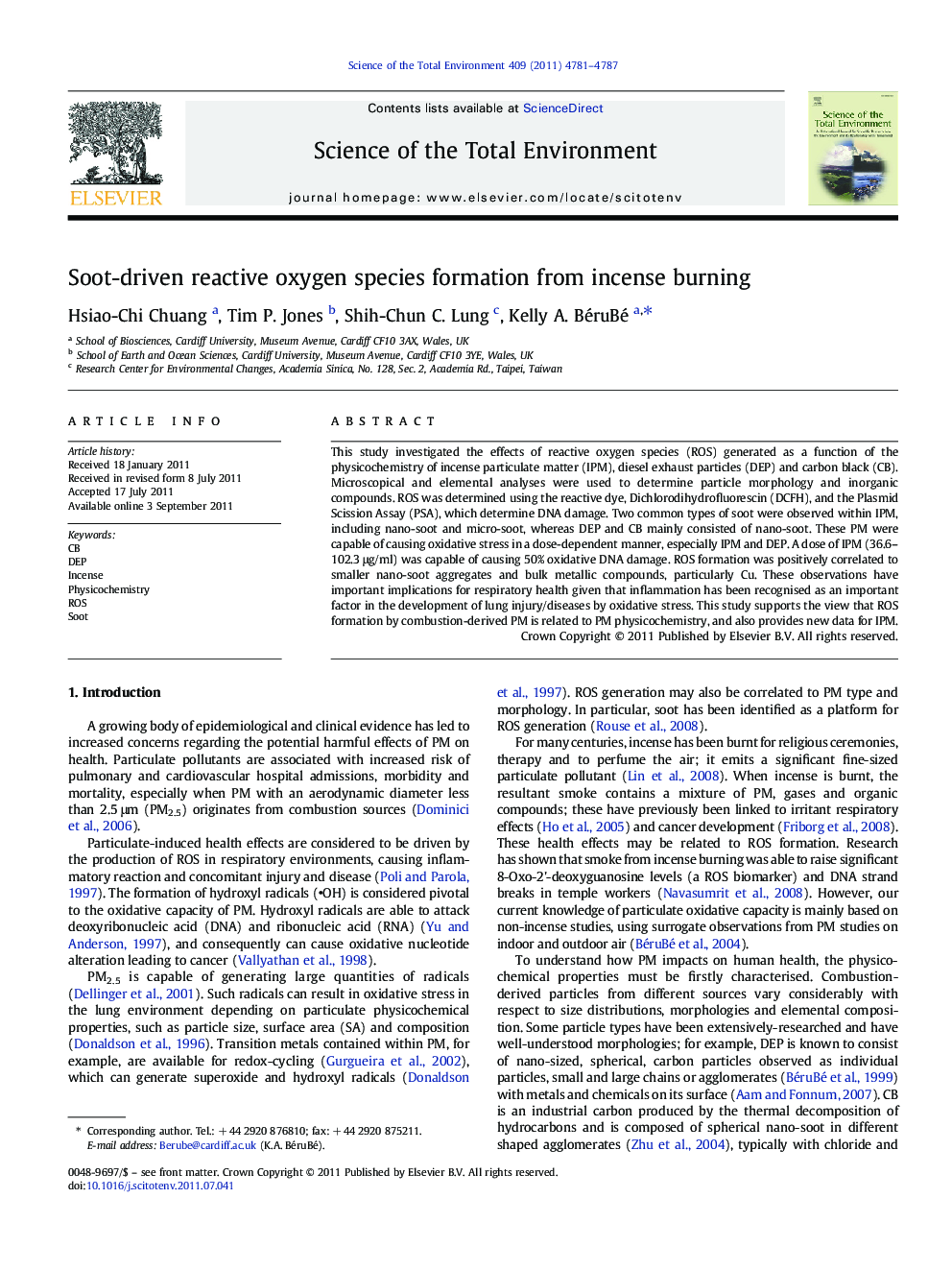| Article ID | Journal | Published Year | Pages | File Type |
|---|---|---|---|---|
| 4429967 | Science of The Total Environment | 2011 | 7 Pages |
This study investigated the effects of reactive oxygen species (ROS) generated as a function of the physicochemistry of incense particulate matter (IPM), diesel exhaust particles (DEP) and carbon black (CB). Microscopical and elemental analyses were used to determine particle morphology and inorganic compounds. ROS was determined using the reactive dye, Dichlorodihydrofluorescin (DCFH), and the Plasmid Scission Assay (PSA), which determine DNA damage. Two common types of soot were observed within IPM, including nano-soot and micro-soot, whereas DEP and CB mainly consisted of nano-soot. These PM were capable of causing oxidative stress in a dose-dependent manner, especially IPM and DEP. A dose of IPM (36.6–102.3 μg/ml) was capable of causing 50% oxidative DNA damage. ROS formation was positively correlated to smaller nano-soot aggregates and bulk metallic compounds, particularly Cu. These observations have important implications for respiratory health given that inflammation has been recognised as an important factor in the development of lung injury/diseases by oxidative stress. This study supports the view that ROS formation by combustion-derived PM is related to PM physicochemistry, and also provides new data for IPM.
► This study physicochemically characterised incense PM, DEP and CB. ► The PM physicochemical properties were linked to their oxidative capacity. ► Nano-soot particles were commonly observed in incense PM, DEP and CB. ► Smaller nano-soot aggregates and bulk metallic compounds were correlated with ROS formation. ► Incense soot is a hazardous pollutant in terms of oxidative stress post-exposure.
